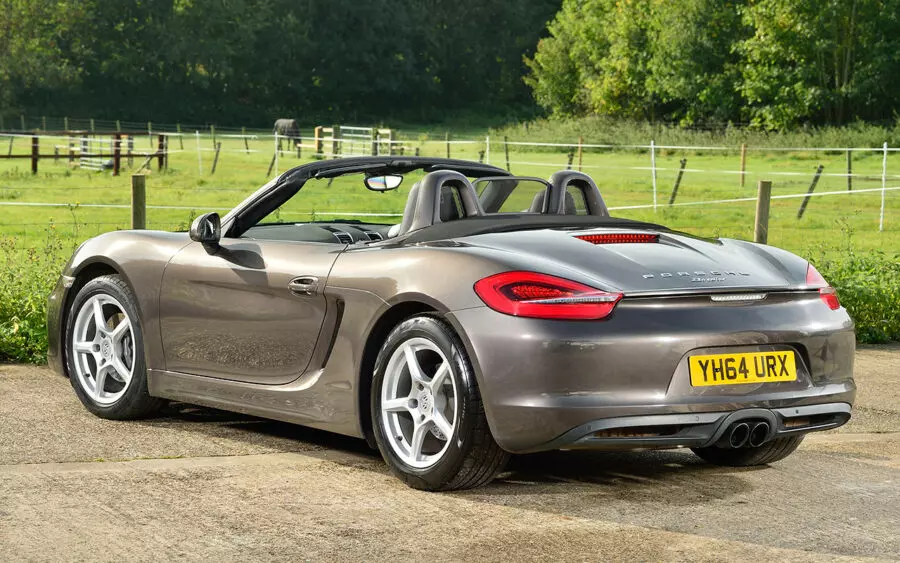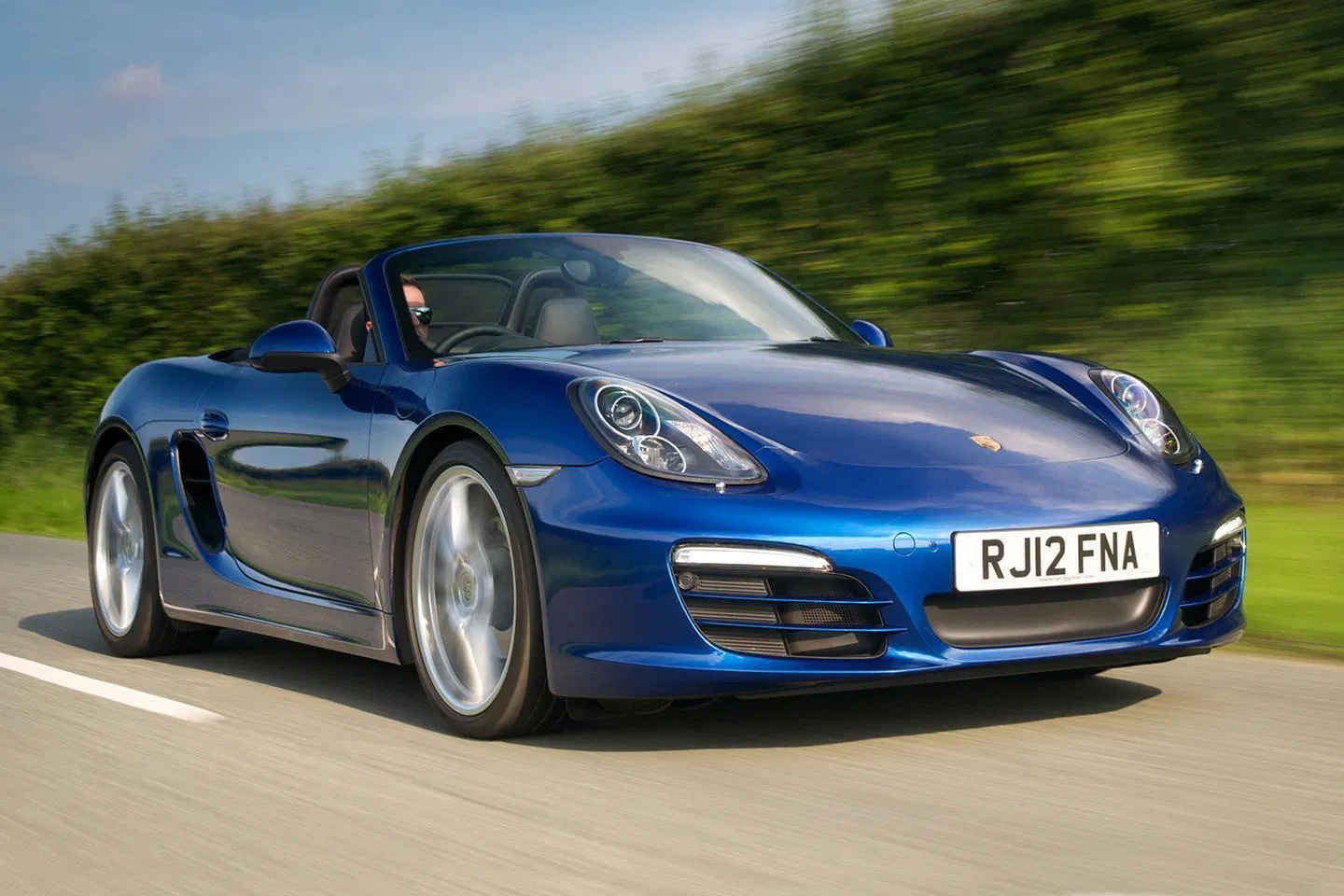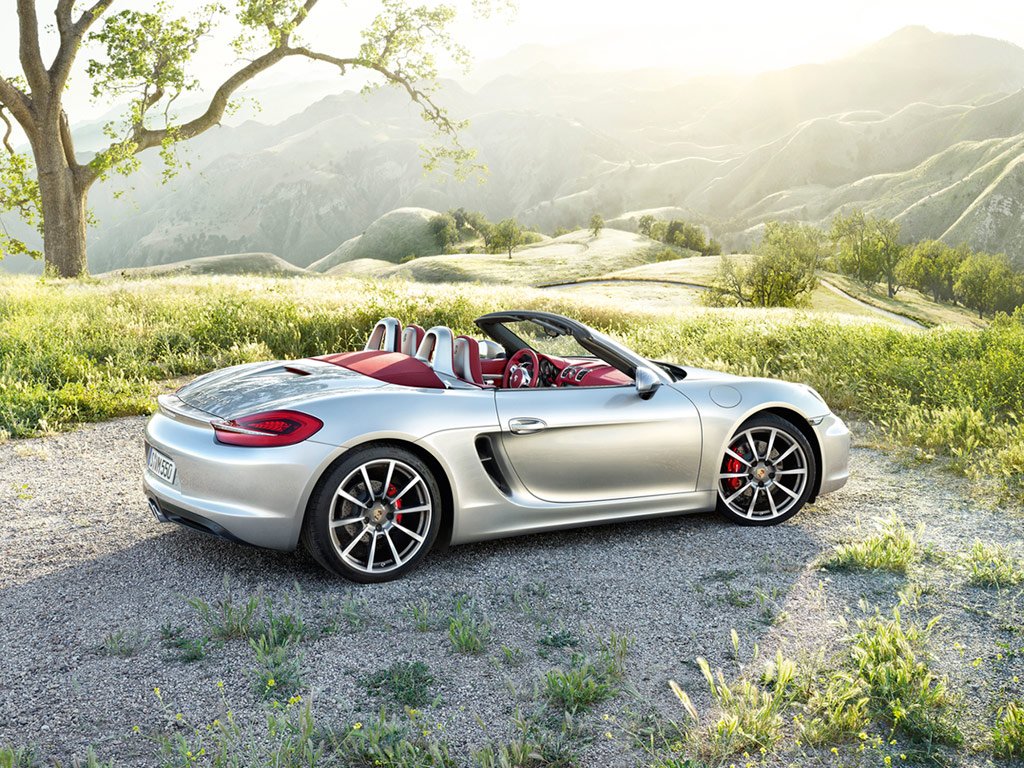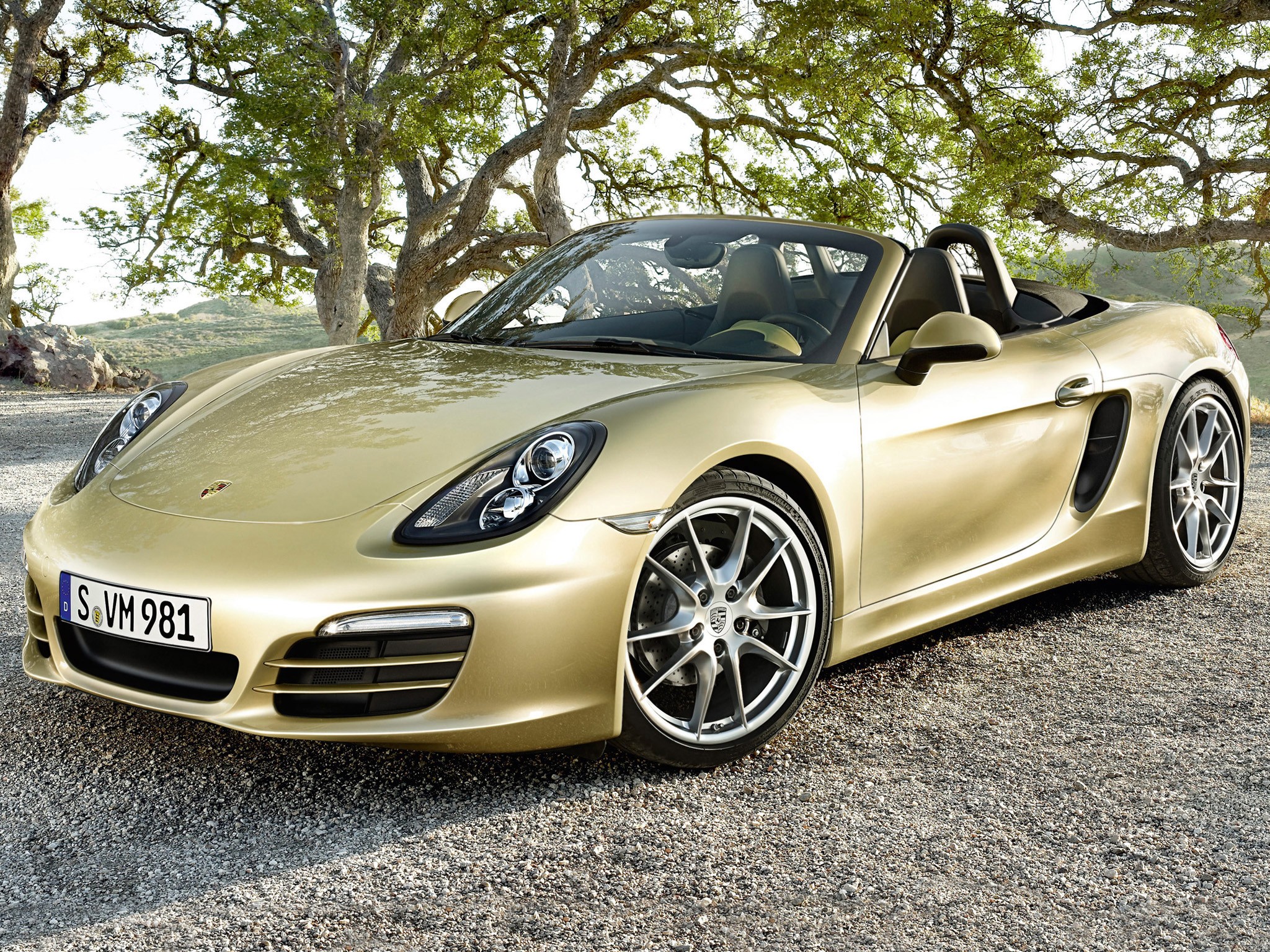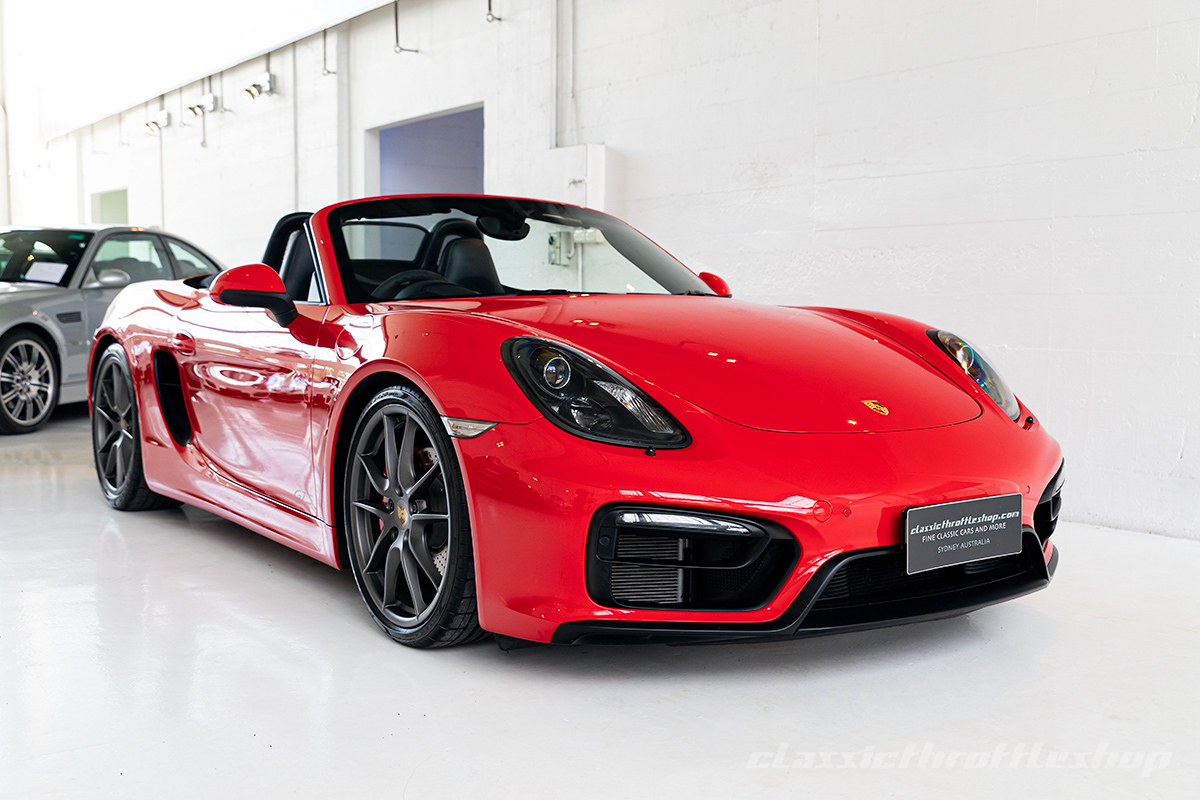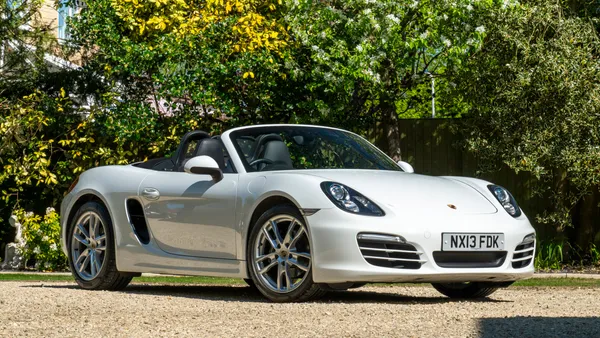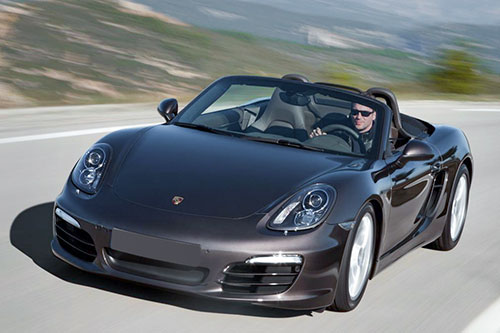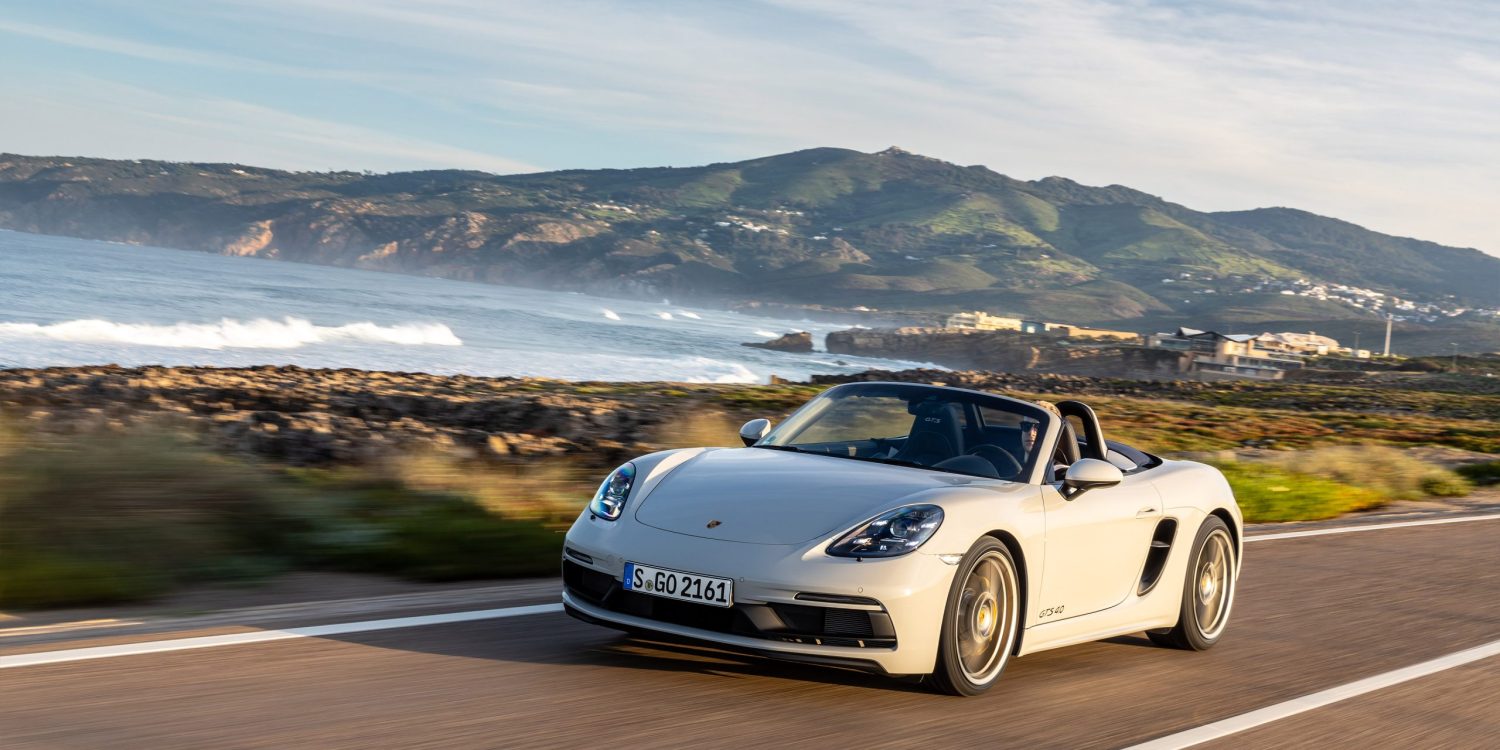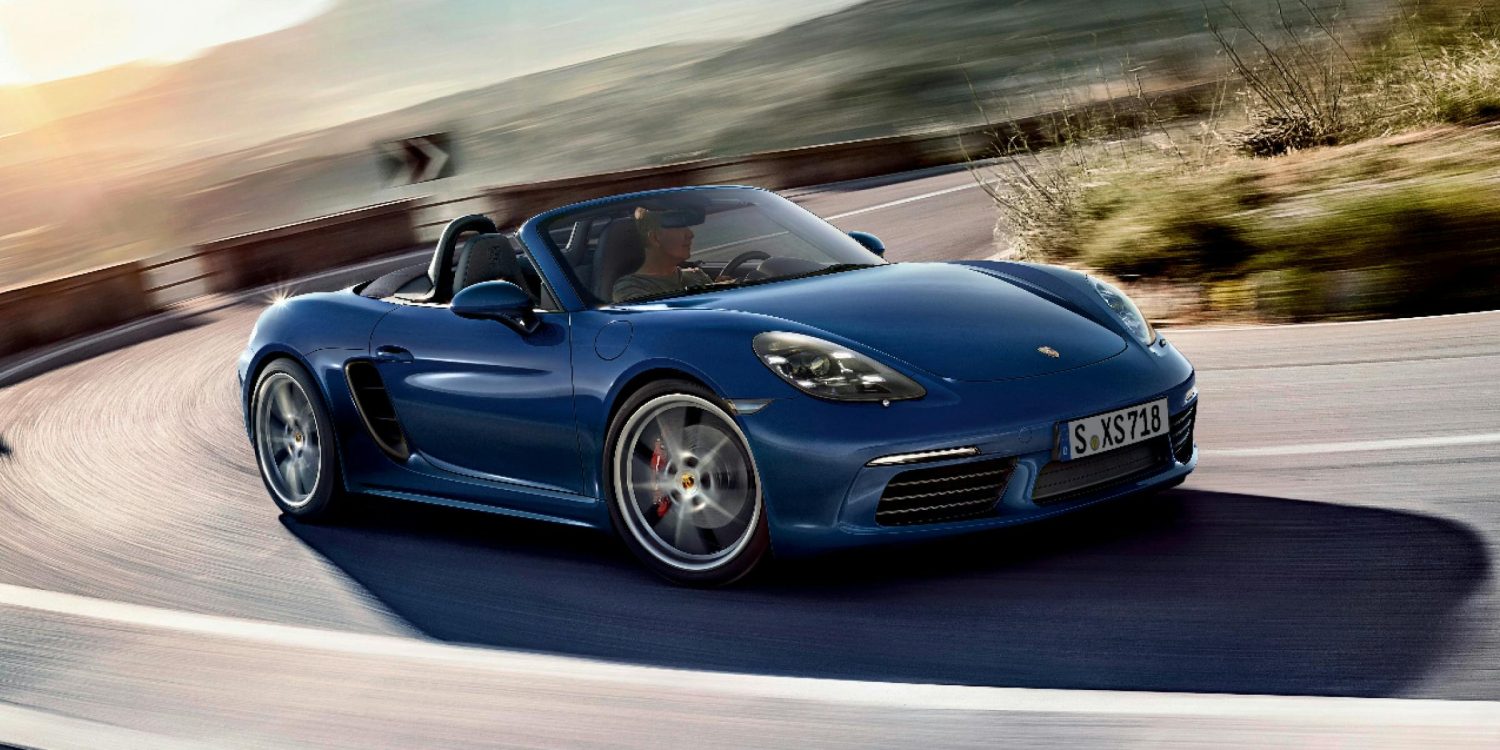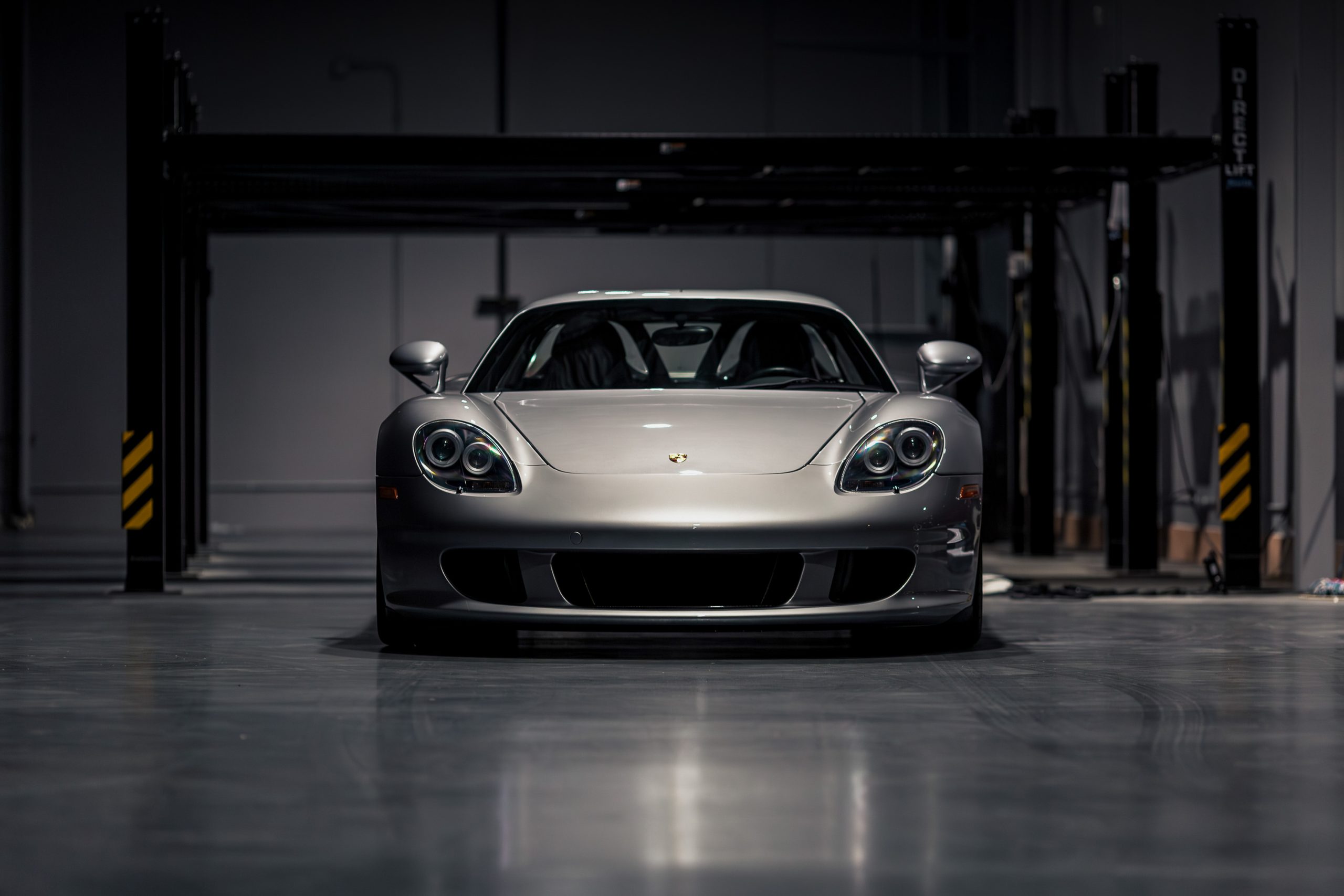3rd Generation Porsche Boxster 981 Buyer's Guide
Buying a third generation Boxster? Our Guide Covers Key Models, Potential Issues, Values, Tips & More.
If you're considering a third-generation Porsche Boxster (known internally as the 981), you're looking at one of the most balanced and rewarding sports cars Porsche has ever produced. Built from 2013 through 2016, the 981 marked a high point in the evolution of the Boxster. With its wider stance, lightweight chassis, and refined styling borrowed from the 991-generation 911, this generation offers a compelling mix of performance, precision, and daily usability. Unlike the later turbocharged 718 models, the 981 retains naturally aspirated flat-six engines—one of its biggest selling points for purists who crave that mechanical, high-revving Porsche character.
In this buyer’s guide, we’ll take you deep into what makes the 981 such a standout choice in the used sports car world. Whether you’re eyeing the well-rounded base model, the sharper and more powerful S, the sport-luxury GTS, or the track-honed Spyder, each variant has its own character, value proposition, and set of considerations. We'll explore the key differences between model years, dive into known issues and maintenance expectations, and give you up-to-date insights on pricing and market trends. From expert tips on what to look for in a test drive to long-term ownership expectations, this guide covers it all.
If you're looking for the sweet spot between modern Porsche engineering and old-school driver engagement, the 981 Boxster is one of the last truly analog feeling Porsches in an increasingly digital world. In short: it’s a driver's car that you can still enjoy, afford, and rely on. Let’s dive into everything you need to know before making one yours.
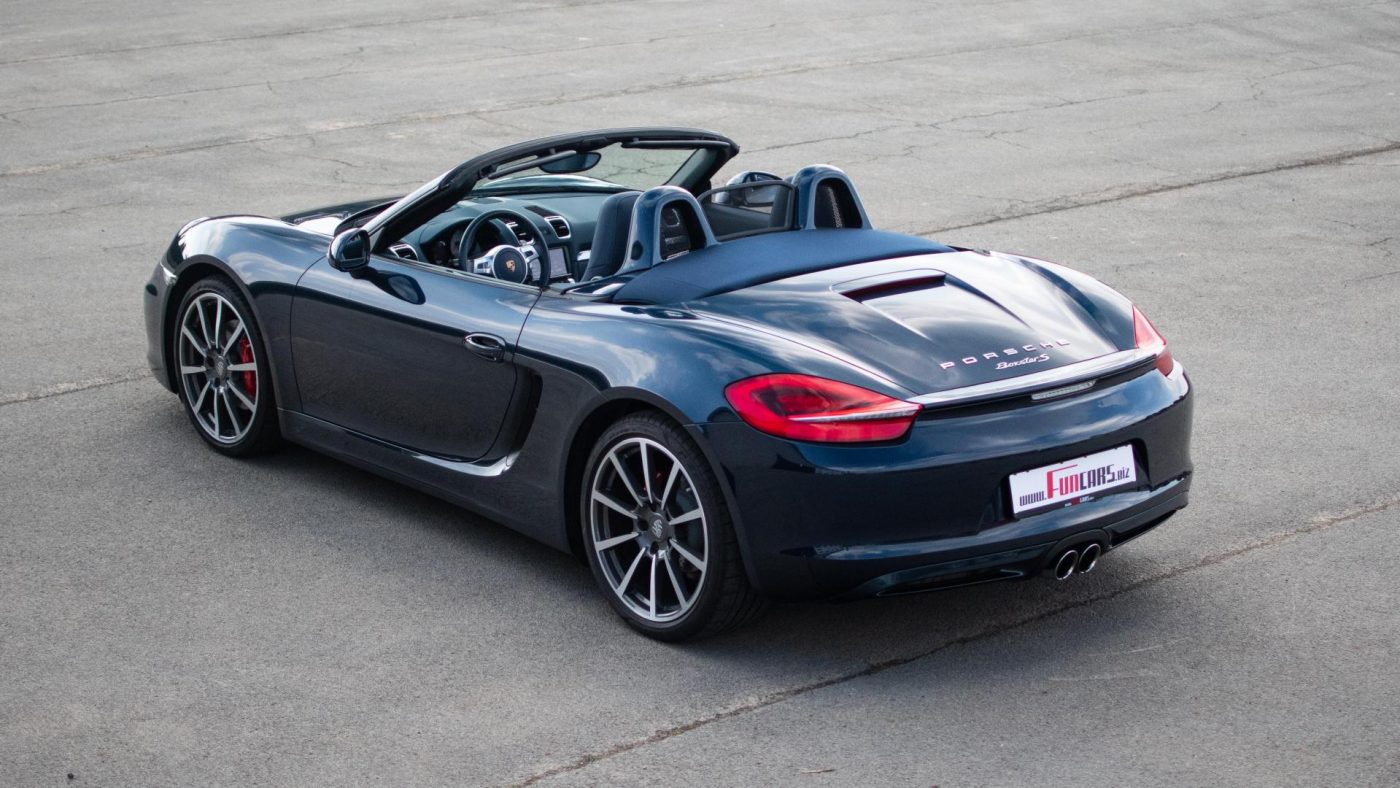
Why the 3rd Gen Porsche Boxster 981 is a Unique Sportcar to Buy
The third-generation Porsche Boxster, known internally as the 981, represents one of the most compelling sports car offerings of the past two decades. Introduced in 2013 and produced through 2016, the 981 was a full evolution of the Boxster formula: a mid-engine roadster with precise handling, linear naturally aspirated power, and an increasingly refined Porsche driving experience. What makes the 981 unique is its perfect straddling of old-world mechanical engagement and modern usability—offering hydraulic-feel steering (via an electric rack tuned remarkably well), a naturally aspirated flat-six engine, and a cabin that finally felt on par with its 911 sibling. As newer performance cars increasingly rely on turbocharging, synthetic noise, and digital layers between driver and machine, the 981 remains an analog antidote—a genuine driver’s car that hasn’t lost its relevance.
For potential buyers, the appeal goes beyond the spec sheet. The 981 was designed during a golden period at Porsche, sharing architecture with the 991-generation 911 and carrying that design ethos inside and out. Whether in base form with the 2.7-liter flat-six or as a Boxster S with its more potent 3.4-liter engine, the driving experience is linear, connected, and delightfully rewarding. The GTS variant, introduced in 2015, sharpened the focus even further—offering 330 horsepower, standard PASM suspension, and aggressive cosmetic upgrades. And for purists and collectors, the 2016 Boxster Spyder—fitted with the 3.8-liter engine from the 911 and offered only with a manual transmission—is widely considered one of the finest open-top Porsches ever made.
From a practicality standpoint, the 981 also hits a sweet spot. With front and rear luggage compartments, comfortable seating, and available options like adaptive dampers and heated/cooled seats, it’s a genuinely usable daily driver or weekend escape machine. Build quality is strong, parts availability remains good, and while it’s still a Porsche in terms of maintenance costs, it’s far more manageable than a 911. Plus, with depreciation having already hit its hardest, many examples now sit at tempting values for enthusiasts seeking maximum return on driving enjoyment.
Ultimately, what makes the 981 Boxster such a great buy is its combination of timeless design, balanced performance, and an authentic Porsche soul. It’s a sports car that rewards every input yet doesn’t demand perfection from the driver. Whether you’re hunting for your first Porsche or a seasoned collector looking for a well-rounded convertible, the 981-era Boxster stands out as a future classic that delivers thrills without compromise.
3rd Gen Boxster 981 Variants - A Quick Primer for Potential Buyers On The Variants & Specials To Think About.
We already have ultimate guide to the Porsche Boxster 981 so we don't want to repeat everything here. Instead, we will give you a quick primer and summary about the main third generation Boxster variants, some of the core model year changes and we will talk about some special editions worth noting as you think about your potential purchase.
Key Variants & Differences
Porsche offered several variants over the 981’s run, each with its own appeal to different buyers.
Boxster (Base)
The entry-level 981 Boxster came equipped with a 2.7-liter flat-six producing 265 horsepower. While it's the least powerful model in the range, its lightweight design and mid-engine balance make it a rewarding driver’s car, especially with the 6-speed manual. It's also the most affordable way into a 981, offering excellent value and a purer driving experience. Buyers who prioritize simplicity and classic roadster character over outright speed will find a lot to like here—especially for sunny weekend use or as a second car.
Boxster S
Stepping up to the Boxster S brought a 3.4-liter flat-six with 315 horsepower, sharper throttle response, and noticeably improved straight-line performance. With 0–60 mph times in the low 4-second range (with PDK and Sport Chrono), the S is the sweet spot for many enthusiasts. It’s a more complete sports car, yet still balanced and composed enough for everyday use. From a buyer’s standpoint, the S offers the best mix of performance, price, and availability—and models with PASM, Sport Chrono, and the PDK gearbox fetch a premium.
Boxster GTS
Launched in 2015, the GTS was the performance pinnacle of the standard 981 range before the arrival of the Spyder. It featured a revised 3.4-liter engine making 330 horsepower, standard PASM adaptive suspension, a sportier exhaust, unique styling elements, and typically high levels of standard equipment. GTS models also have more aggressive tuning in both manual and PDK forms and came with the Sport Chrono package as standard. Buyers looking for a high-spec, performance-focused 981 that still offers daily comfort will find the GTS to be a top-tier choice—and resale values reflect that.
Boxster Spyder (981)
The ultimate iteration of the 981 Boxster, the 2016 Spyder was a purist’s dream. It packed the 3.8-liter engine from the 991 Carrera S with 375 horsepower, a manual-only transmission, lowered suspension, lighter weight (thanks to a manual top, deleted infotainment, and other weight-saving features), and aggressive styling. It’s the rarest and most collectible 981 variant, with limited production and intense enthusiast demand. For buyers, this is the one to get if investment potential and visceral driving thrills are at the top of the priority list. Be prepared to pay a premium, and act quickly—Spyder listings don’t last long.
The 981 generation is widely praised for being the last naturally aspirated, hydraulic-steering Boxster, making it a future classic in the eyes of many purists. Buyers should consider how they plan to use the car—base models for sunny-day cruising, S models for a balanced sports car experience, GTS for spirited driving with comfort, and the Spyder for the ultimate lightweight, analog Porsche thrill. As always, condition, maintenance history, and options (like Sport Chrono, PASM, and premium sound) can make a big price difference.
Model Year Changes (2013-2016)
Though its production span was relatively short, each model year introduced subtle changes and new variants to the mix.
2013 – The Launch Year
The 981 Boxster debuted in 2013, replacing the 987 generation with an all-new chassis, lighter construction, wider track, and a more aggressive design. It also introduced electric power steering and a new interior architecture closely mirroring that of the 991-generation 911. The base model featured a 2.7-liter flat-six producing 265 hp, while the Boxster S got a 3.4-liter engine with 315 hp. Both engines were naturally aspirated, and the new PDK gearbox option helped reduce 0–60 times significantly. This model year represents the full step forward in design and dynamics, and because it's the earliest, it tends to be the most affordable on the used market.
2014 – Equipment and Option Package Refinements
For 2014, Porsche made very few mechanical changes, but there were some adjustments to available options. A few trim packages and interior colors were updated, and Porsche began offering new optional wheels and personalization options through Porsche Exclusive. The car remained fundamentally the same, but many buyers gravitated toward this model year as early production bugs from the 2013 launch had been resolved.
2015 – The GTS Joins the Lineup
The biggest change in the 981 Boxster range came in 2015 with the introduction of the Boxster GTS, which slotted above the S in performance and spec. It came with 330 horsepower from the same 3.4-liter flat-six, but with more aggressive tuning, standard PASM adaptive dampers, and the Sport Chrono Package. The GTS also featured unique exterior and interior elements, including darkened lights and trim, revised fascias, and upgraded leather with Alcantara inside. This model year stands out for buyers looking for a factory-tuned, high-performance 981 with many desirable options bundled in.
2016 – The Spyder and Final Year of the 981
In 2016, Porsche unveiled the Boxster Spyder, the high-performance, stripped-down halo car of the 981 generation. It packed the 3.8-liter engine from the 911 Carrera S, making 375 hp, and featured a manual-only gearbox, lightweight construction, a manually operated soft top, and a unique rear deck with aerodynamic styling. Meanwhile, the standard Boxster and Boxster S continued unchanged, with 2016 marking the final production year before the launch of the turbocharged 718 generation. As such, late 2016 cars—especially the Spyder—have become particularly sought after by collectors and enthusiasts wanting the last of the naturally aspirated, flat-six Boxsters.
From a buyer’s perspective, each model year of the 981 Boxster offers a compelling package, but the later years—particularly 2015 and 2016—tend to hold their value better due to the introduction of the GTS and Spyder models.
Earlier years may represent better value for money, especially if you're shopping for a well-optioned base or S model. Regardless of the year, however, the 981 generation represents a high point in Porsche’s mid-engine legacy thanks to its excellent dynamics, high-quality cabin, and evocative design.
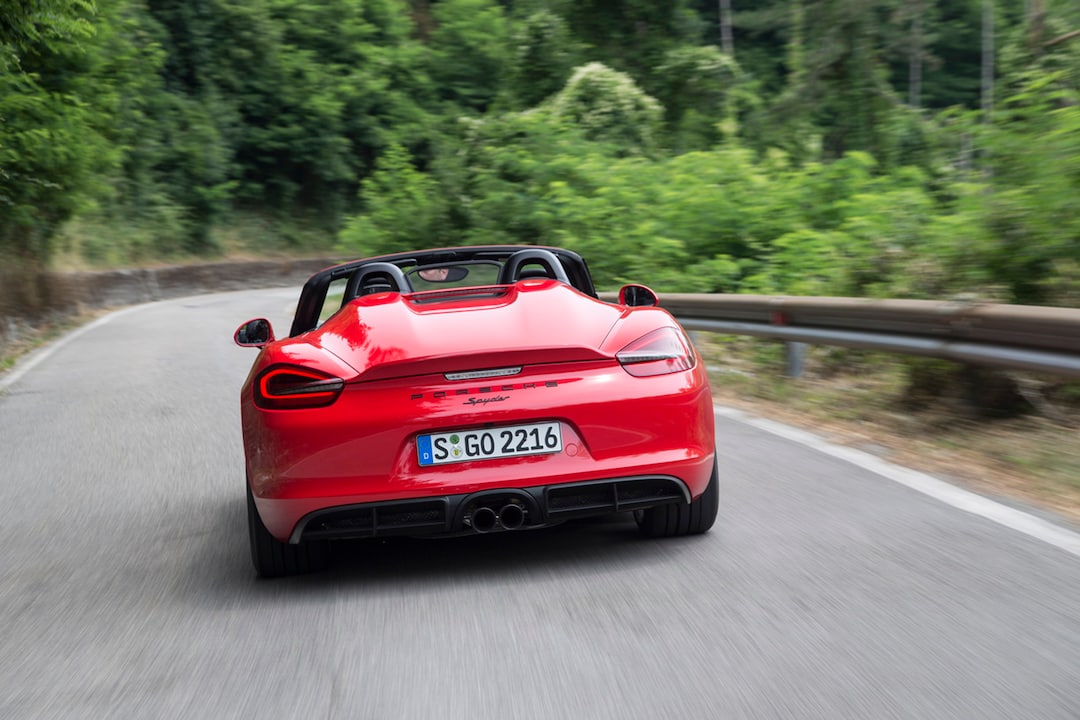
Third Generation Porsche Boxster 981 Market Value & Pricing
The 3rd generation Porsche Boxster (981), produced from 2012 to 2016, currently represents one of the best value propositions in Porsche’s modern lineup. After experiencing typical early depreciation, 981 values have begun to stabilize—particularly for well-optioned examples and performance-oriented trims like the Boxster S, GTS, and Spyder. Base models in good condition with moderate miles now typically trade in the low $30,000s, while clean Boxster S variants tend to command closer to $35,000–$45,000 depending on mileage, options, and service history.
Higher-spec GTS and Spyder models fetch premiums, with GTS examples often ranging from the high $40,000s to low $60,000s, and Spyders—considered modern collectibles—consistently bringing $80,000 and up for low-mileage, well-maintained cars. Market interest has steadily grown due to the car’s naturally aspirated engines, timeless styling, and exceptional balance between everyday usability and pure driving pleasure. As more enthusiasts recognize the 981’s sweet spot in the Porsche lineup—bridging analog feel with modern refinement—values for sorted cars are likely to remain strong.
Factors That Affect Value
While these cars are already recognized for their balanced performance, sharp handling, and beautiful mid-engine design, not all 981s are created equal—buyers and collectors pay close attention to specific attributes that can significantly sway pricing.
One of the most critical value drivers is the trim level. The base Boxster remains the most affordable entry point, while the S commands a healthy premium for its larger engine and added performance.
The GTS model, with its power bump, unique styling cues, and standard sport features, is especially desirable among driving enthusiasts. At the top of the spectrum sits the limited-production Boxster Spyder, prized for its 3.8L engine, aggressive styling, and pure driver-focused nature—making it a modern classic in the eyes of collectors and routinely the most expensive 981 variant on the used market.
Mileage and condition play a major role, as expected. Low-mileage, well-kept examples with documented service histories will always command higher prices, particularly as the 981 generation starts to gain recognition as a potential future classic.
Enthusiast-grade options such as PASM (Porsche Active Suspension Management), Porsche Torque Vectoring (PTV), Sport Chrono, and PCCB (ceramic brakes) can add significant value, especially when bundled with sought-after color combinations and interior trims.
Lastly, transmission choice is increasingly relevant. While the PDK dual-clutch is fast and highly competent, demand for the manual gearbox remains strong, especially among purist buyers. A 981 GTS or Spyder with a manual transmission and the right options will not only command a premium today, but is likely to appreciate over time.
Overall, a combination of performance spec, provenance, condition, rarity, and configuration all converge to shape how the market values a 981 Boxster.
What You'll Pay
Entry-level 981 Boxsters, which came with a 2.7-liter flat-six engine, represent the most accessible point in the lineup. You’ll find 2013–2014 examples with moderate mileage (60k–80k miles) priced from the high $20,000s to mid-$30,000s. Well-maintained cars with clean service histories and desirable options—such as Sport Chrono, PDK, or PASM—can stretch closer to $35,000–$40,000, especially from later model years or those in rare colors. Manual transmissions command a modest premium in enthusiast circles..
Step up to the Boxster S, which adds a larger 3.4-liter engine and sharper performance, and you’ll find the market adjust accordingly. Clean examples typically start in the mid-$30,000s and can run up to the low $50,000s for later-year or lower-mileage cars. The S strikes a strong balance between daily usability and performance credibility, and as such, enjoys steady demand. Values increase when cars are equipped with enthusiast-friendly specs like the 6-speed manual, 20-inch wheels, and adaptive sport seats, and drop off slightly for examples with high mileage.
The Boxster GTS occupies a performance sweet spot and commands a noticeable premium. With more power than the S, as well as standard adaptive suspension, a sport exhaust, and aggressive styling details, the GTS is increasingly seen as a modern collector’s car. Expect to pay anywhere from $50,000 to $65,000 depending on mileage, transmission, and overall condition. Manual-equipped GTS models are especially prized and harder to find, as many were ordered with PDK. The rarity of well-optioned, low-mileage GTS models gives them a resilient position in the used market.
At the top of the 981 hierarchy is the Boxster Spyder, which debuted in 2016 and featured a 3.8-liter engine borrowed from the 911 Carrera S, a lightweight fabric roof, and a pure, performance-first philosophy. These cars have carved out a niche as one of the finest open-top driver’s cars Porsche has built in the modern era. Because of this, prices remain firm: you’ll rarely find a Spyder for under $85,000, and the best examples (low miles, desirable colors, full options) often trade in the $95,000 to $110,000 range.
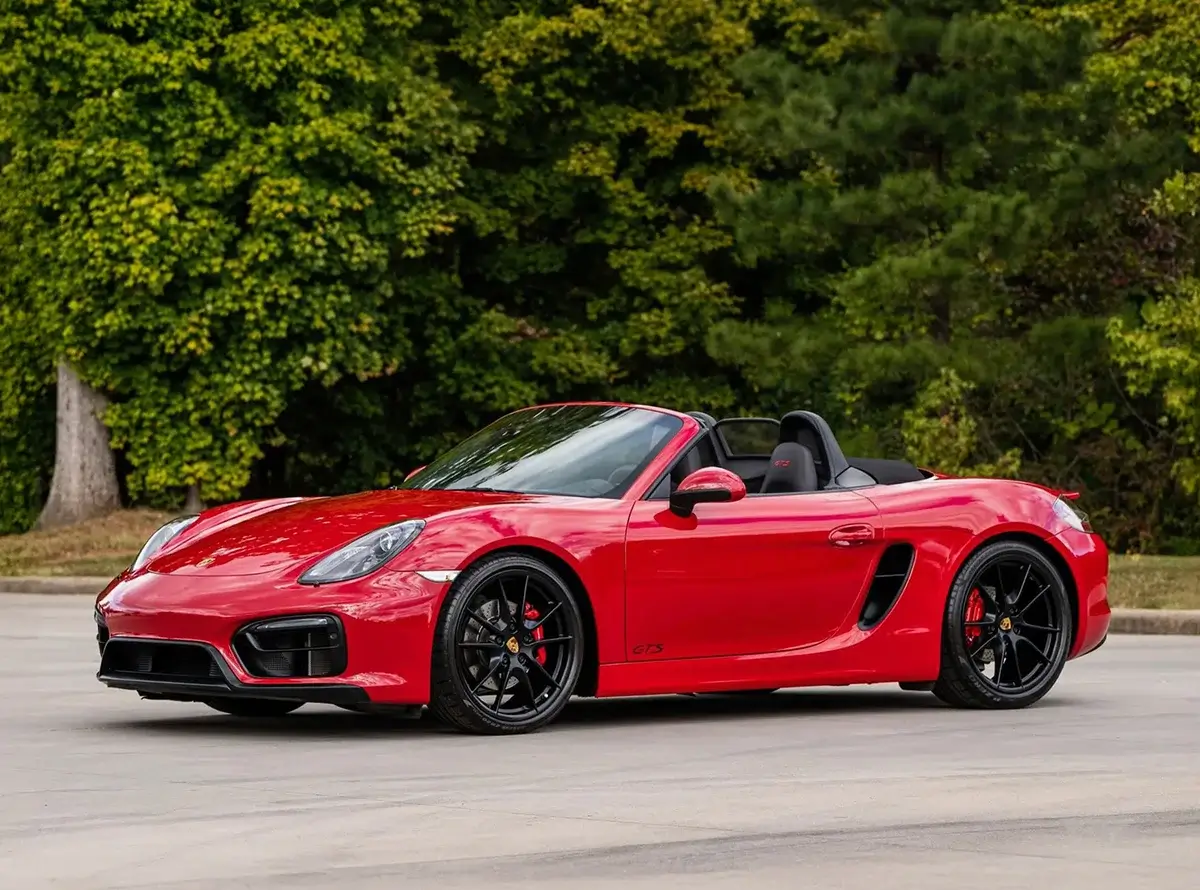
3rd Gen Boxster Driving Experience & What to Expect
What They Said at The Time
When the third-generation Porsche Boxster (981) debuted in 2012, it was met with widespread acclaim from automotive journalists and enthusiasts alike. The 981 series, encompassing the base model, S, GTS, and Spyder variants, was celebrated for its refined design, exceptional handling, and engaging driving experience.
"Almost as good as the 991, half the price and better steering" Chris Harris about 981 Boxster S
Car and Driver highlighted the 2013 Boxster S's performance improvements, noting that the new model was superior in every performance category except acceleration. The publication emphasized the car's enhanced chassis dynamics and overall driving pleasure.
The 2016 Boxster Spyder received particular praise for its purist approach. Auto Express described it as "stunningly fast," with "razor-sharp throttle response" and a tactile feel that set it apart from other Boxster models. The Spyder's lightweight construction and manual soft top contributed to a driving experience that was both raw and exhilarating.
"Like all other 981 variants, the Boxster GTS is a dream to drive quickly. The steering is still magnificent... and the chassis dynamics are stellar."
Owners and enthusiasts also shared their admiration for the 981 series. On forums like Rennlist, drivers expressed their preference for the 981 Spyder over newer models, citing its superior sound, speed, and driving dynamics. The 981 GTS was lauded for its balance between performance and practicality, with one owner noting it was "plenty fast enough for road driving" and "fitted into my life perfectly."
"The Spyder is also as balanced, poised, and neutral as this generation Boxster ever has been. The brakes... are magnificent, as potent as any sport car's. Perfect pedal feel, for real." - Motor Trend
In summary, the 981 Boxster series was celebrated for its blend of performance, design, and driving engagement. Journalists and owners alike recognized it as a standout in the sports car segment, offering a compelling alternative to more traditional models.
What to Expect Today
The third-generation Porsche Boxster (981) remains one of the most rewarding sports cars to drive today—precise, balanced, and engaging in a way that still stands out even against more modern offerings. For drivers used to newer vehicles with advanced tech and digital filters, the 981 delivers a more tactile, analog experience while maintaining just enough modern refinement to feel contemporary.
At the heart of the 981’s appeal is its mid-engine layout, which gives the car nearly perfect balance. Whether it’s a base 2.7-liter (265 hp), the Boxster S with its 3.4-liter flat-six (315 hp), or the range-topping Boxster GTS (330 hp), the car feels light, agile, and eager to be pushed. The hydraulic steering—something now largely extinct—offers genuine feedback, allowing you to sense exactly what’s happening at the front wheels. Turn-in is sharp, body roll is minimal, and there's a playful composure through corners that makes even a trip to the grocery store feel like an event.
In terms of performance, the 981 is deceptively quick. The base model feels responsive and fun when paired with the 6-speed manual, while the S and GTS models offer noticeably more urgency, especially higher in the rev range. While not “fast” in the face of today's turbocharged or EV rivals, the naturally aspirated flat-six engines make up for it with linear power delivery, high-revving character, and one of the most musical exhaust notes in the segment—especially when fitted with the optional Porsche Sport Exhaust (PSE).
For daily driving, the 981 is remarkably livable. The cabin is comfortable, the ride quality is composed (especially with PASM), and noise insulation is decent for a convertible. Storage is practical too, thanks to both front and rear trunks. It's perfectly at home as a commuter or road trip companion—something many modern sports cars struggle to balance.
In today’s context, a 981 Boxster still feels like a driver’s car in the purest sense. While newer cars might be faster on paper or offer more connectivity and digital interfaces, the 981's mechanical honesty and superb driving dynamics give it enduring appeal. For buyers seeking a sports car that delivers real feedback, high-quality engineering, and everyday usability—without overwhelming tech or isolation—the 981 Boxster remains one of the best options in the market.
Getting Real - Costs to Own & Maintenance
Owning and maintaining a third-generation Porsche Boxster (981), produced from 2012 to 2016, is generally manageable by premium sports car standards—especially when compared to older Porsche models or more exotic alternatives.
However, it is still a mid-engine sports car, and costs can add up quickly if you neglect maintenance or buy a poorly maintained example. For most owners, annual running costs range from $1,500 to $3,000 depending on mileage, driving habits, and whether you use an independent Porsche specialist or a main dealer.
Routine maintenance items such as oil changes ($250–$400), brake pads and rotors ($1,000–$2,000), and major service intervals (spark plugs, transmission service, coolant flushes, etc.) can be expected every few years. PDK-equipped cars have their own maintenance schedule, with transmission fluid changes typically recommended around the 40,000-mile mark.
While the 981’s naturally aspirated flat-six engines are generally robust, regular attention to fluids, filters, and wear items will go a long way in preventing costly surprises. Unlike the earlier 986/987 models, the 981 generation does not suffer from widespread IMS bearing issues or bore scoring, though isolated cases of oil leaks or minor cooling system issues do occur.
Parts availability is excellent. Porsche continues to support the 981 with a solid supply of OEM components, and the shared platform with the 991 and 981 Cayman means many components are readily available from both dealers and third-party suppliers. There’s also a healthy ecosystem of Porsche-specialized independent shops, which can cut service costs by 30–40% compared to dealership labor rates. Tires for a 981 (especially with 19- or 20-inch wheels) can cost anywhere from $900 to $1,400 per set depending on brand and spec.
Insurance premiums vary widely depending on age, location, driving history, and whether the car is used as a daily driver or weekend toy. In general, expect to pay anywhere from $1,000 to $2,500 annually for coverage. A clean driving record and limited-mileage policy can help significantly lower premiums, especially if you’re insuring the car as a secondary vehicle.
In short, the Porsche 981 Boxster is among the most cost-effective ways to experience a modern Porsche with engaging performance and elegant design. Buyers should still factor in a healthy maintenance budget and prioritize service history—but overall, the 981 offers a solid mix of reliability and lower running costs relative to its performance and pedigree.
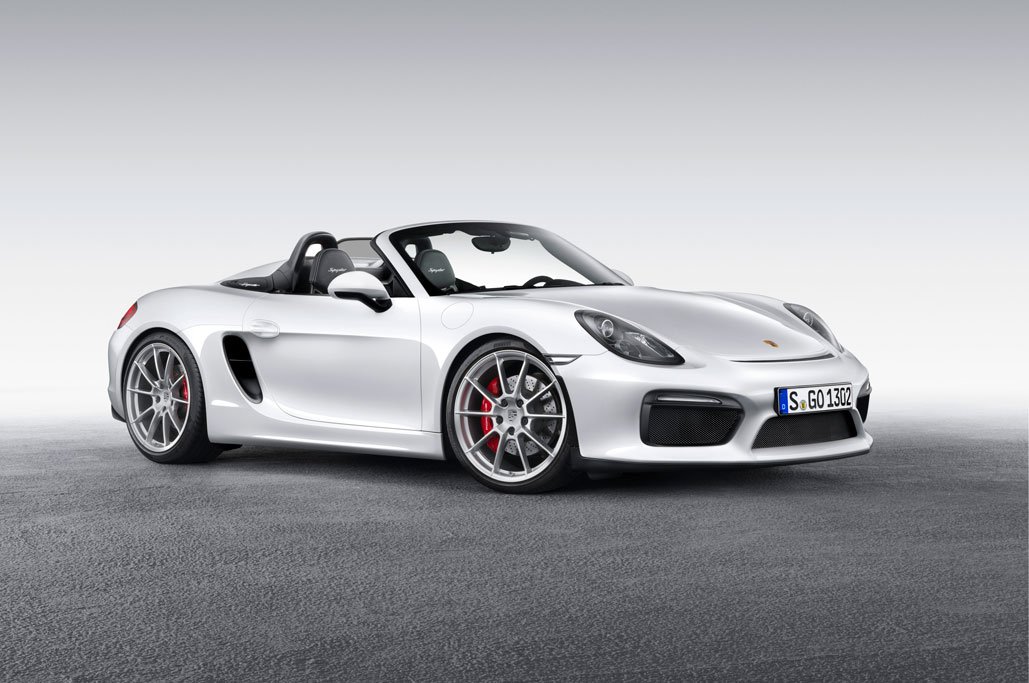
Common 3rd Gen Porsche Boxster 981 Problems
What Buyers Should Know
While the third-generation Porsche Boxster (981, 2013–2016) is widely regarded as one of the most reliable Porsche Boxster platforms ever built, it’s still a performance car—and like any used vehicle, especially a mid-engine sports car, there are a few common issues and ownership quirks that buyers should understand.
One of the more frequently discussed concerns involves Porsche’s PDK dual-clutch transmission. While incredibly smooth and generally robust, some early PDK-equipped cars have experienced occasional software glitches or rough shifting, often solved with a software update or fluid service. Regular maintenance of the PDK—ideally every 40,000 miles—is critical to ensure long-term reliability and performance.
Oil leaks can also occur, particularly from the rear main seal (RMS) or camshaft covers, though these issues are far less common than on earlier generations. If spotted early, they’re manageable, but repairs can be labor-intensive due to the mid-engine layout. Always check for oil residue under the engine area and request detailed service records.
Some owners have reported issues with coil packs and spark plugs, especially on higher-mileage cars or those driven infrequently. Misfires under load or during startup are early symptoms, and while not catastrophic, replacing all coil packs and plugs can run $600–$1,000 depending on the shop. Oxygen sensors and MAF sensors may also fail with age and mileage, but these are straightforward and relatively inexpensive fixes.
On the interior, infotainment and electronic issues can arise, particularly with older PCM units. Bluetooth connectivity, backup cameras, and navigation may not function as seamlessly as more modern systems. Additionally, some cars with power convertible tops have had problems with the top mechanisms or hydraulic actuators over time—so test the roof thoroughly before purchase.
That said, the 981 generation is free from some of the major mechanical Achilles’ heels that plagued earlier models—such as the IMS bearing issue. With regular maintenance, proper fluid changes, and a history of responsible driving, a 981 Boxster can deliver a remarkably dependable ownership experience. A pre-purchase inspection (PPI) by a Porsche specialist remains a must, but for many, the 981 represents the most confidence-inspiring entry point into modern Porsche ownership.
Buying A 3rd Gen Porsche Boxster 981 FAQs
Here are all the questions we've received from readers considering a 3rd Gen Boxster for their driveway
What are the top five things to look for when buying a 3rd gen Boxster?
When buying a third-generation Porsche Boxster (981, 2013–2016), there are five key areas prospective buyers should focus on to ensure they’re getting a well-sorted car. While the 981 generation is generally reliable and praised for its engineering refinement, there are still important considerations that can make or break long-term ownership.
First, check for a full and documented service history. This includes annual oil changes, brake fluid flushes, and routine inspections, even if the car has low mileage. Unlike earlier generations, the 981 doesn’t have an IMS bearing issue, but it’s still a high-performance machine, and neglect can lead to expensive surprises. Cars serviced regularly by Porsche specialists or dealers are generally better cared for and command higher resale values.
Second, inspect for signs of abuse or hard use, particularly on the PDK or manual transmission. On PDK-equipped cars, ask for the clutch wear report (obtainable via a Porsche dealer or diagnostic tool), and on manual cars, be wary of aggressive shifting or signs of clutch fatigue. Track use isn’t necessarily a red flag, but it should come with full records and proof the car was maintained accordingly.
Third, pay close attention to the convertible top and its mechanism. While the 981’s soft top is well-engineered, problems with the motors or alignment can lead to costly repairs. Make sure it opens and closes smoothly, seals properly, and shows no signs of sagging, fraying, or excessive wear. Also inspect the rear window for clarity and tightness.
Fourth, check the suspension and brakes—especially on S and GTS models. Many 981s were driven enthusiastically (as they should be), so look for worn bushings, tired shocks, or warped rotors. Listen for clunks or squeaks during a test drive and factor in potential refresh costs. Adaptive suspension (PASM) systems should be tested in both modes to ensure proper operation.
Fifth, verify originality and options. The 981 was heavily customized at the factory, and higher-spec cars with options like Sport Chrono, PASM, PSE (sport exhaust), and upgraded infotainment or leather packages tend to hold value better and enhance the driving experience. Heavily modified examples, on the other hand, may have lower resale value and indicate spirited or careless ownership. Matching VIN tags, option codes, and window stickers (if available) all help confirm provenance.
Buying a 981 Boxster can be a smart move—the cars are beautifully balanced, engaging to drive, and visually refined. But a careful inspection and strong documentation history are key to ensuring the experience remains as thrilling as Porsche intended.
Just how important are service records and ownership history?
For a Porsche 981 Boxster, service records and ownership history are absolutely critical—not just for peace of mind, but also for preserving value and avoiding costly mistakes. While the 981 generation (2013–2016) is widely regarded as one of the most reliable and refined modern Porsche sports cars, it’s still a high-performance machine. Proper maintenance isn’t optional—it’s essential.
A complete, well-documented service history tells you the car was cared for properly, with routine oil changes, brake fluid flushes, inspections, and any recall or warranty work performed on time. It also provides insight into how proactive the previous owner(s) were—whether they replaced wear items like brakes, tires, and suspension components at appropriate intervals. Buyers should be wary of cars with gaps in service, long periods of inactivity, or DIY repairs without receipts or records, as these can signal neglect or future mechanical headaches.
Ownership history also matters. Fewer owners often means a more stable life for the car, and long-term owners tend to be more emotionally and financially invested in keeping their cars in good condition. A car that has passed through many hands in a short time may raise red flags about hidden issues or undesirable traits. It's also worth investigating whether the car was owned in climates that expose it to corrosion or UV damage.
Ultimately, service records and ownership history are among the best predictors of long-term reliability—and a well-documented 981 will not only be easier to live with but will also retain more value should you ever decide to sell it. In short: buy the car with the best history, not just the best price.
What are the most sought after 3rd Gen Porsche Boxster (981) variants?
Among the third-generation Porsche Boxsters (981 series, 2013–2016), several variants stand out as the most sought after by enthusiasts and collectors—thanks to their performance, rarity, and purity of experience. While every 981 is celebrated for its mid-engine balance, precise steering, and modern refinement, certain models command more attention—and stronger prices—on the used market.
At the top of the list is the Boxster Spyder (2016). A purist’s roadster, it’s the lightest and most powerful 981 model, featuring a naturally aspirated 3.8-liter flat-six borrowed from the 911 Carrera S, paired exclusively with a 6-speed manual. Its minimalistic soft top, aggressive styling, and focused chassis setup make it a future classic—and a current favorite among collectors. Limited production numbers and its status as the final naturally aspirated manual Boxster of its kind only enhance its desirability.
Close behind is the Boxster GTS (2015–2016). It bridges the gap between the more civilized S and the hardcore Spyder. Featuring a tuned 3.4-liter engine making 330 hp (15 more than the Boxster S), standard Sport Chrono, PASM, and often optioned with the sport exhaust (PSE), it offers one of the most complete, exhilarating driving experiences in the 981 range. Available with either the 6-speed manual or the excellent 7-speed PDK, it’s the sweet spot for many buyers who want performance with daily usability.
The Boxster S also remains a highly desirable model. It delivers a substantial bump in power and performance over the base Boxster, thanks to its 3.4-liter flat-six (vs. 2.7L in the base), better brakes, and typically more sporting equipment. Many examples were well-optioned, and they make for excellent performance-per-dollar purchases in the current market.
Though not as powerful, well-kept base Boxsters with rare options (like PASM, PSE, or special colors) also have appeal—particularly to enthusiasts seeking an analog, lightweight Porsche with lower running costs. But for those seeking long-term collectibility and an emotional connection to Porsche’s sports car lineage, the Spyder and GTS variants clearly stand apart.
What are the best 3rd Gen Porsche Boxster (981) options and extras?
For the third-generation Porsche Boxster 981 (2013–2016), options and extras can significantly enhance both performance and desirability. While the base car is already an incredibly balanced and engaging roadster, Porsche's extensive options list means that well-configured examples stand out—and can command higher resale values.
One of the most sought-after extras is the Sport Chrono Package, which adds dynamic transmission mounts, launch control (on PDK-equipped cars), and the all-important Sport Plus button. This sharpens throttle response, firms up suspension settings (when paired with PASM), and transforms the car’s character from refined cruiser to backroad weapon. It’s a must-have for enthusiast drivers.
Porsche Active Suspension Management (PASM) is another highly desirable feature. This adaptive damping system adjusts suspension stiffness on the fly, giving the Boxster a broader dual personality: compliant over rough roads in Normal mode, and tightened-up for spirited driving in Sport. It adds genuine depth to the driving experience, especially on winding roads or track days.
The Sport Exhaust System (PSE) is an emotional upgrade that buyers often seek out. It delivers that signature Porsche flat-six bark—bassy and aggressive at high RPMs, with the ability to quiet down when cruising. Many enthusiasts consider it essential for wringing maximum auditory joy from the naturally aspirated 981 engines.
Other key options include full leather interiors (as opposed to partial leather or base trims), power sport seats with memory, PDLS (Porsche Dynamic Lighting System) with bi-xenon or LED headlights, and premium wheels, especially the optional 20-inch Carrera Classic or SportTechno designs. For collectors, rare exterior colors like Racing Yellow, Sapphire Blue, or special-order Paint to Sample hues also make a difference.
In short, a 981 Boxster with Sport Chrono, PASM, PSE, and tasteful interior/exterior upgrades is not only more fun to drive but also more compelling in the resale market. When shopping for a used example, these factory options can elevate an already great car into a truly exceptional one.
Is the Porsche 981 Boxster generation expensive to maintain?
The Porsche 981 Boxster (2013–2016) is generally considered to be among the more reasonable Porsches to maintain—especially when compared to earlier generations like the 986 or more complex models like the 911. That said, it’s still a premium German sports car, and costs can add up depending on how the car has been driven, maintained, and optioned.
Routine maintenance is fairly predictable and manageable. Oil changes, typically recommended every 10,000 miles or annually, can cost between $250 and $400 at an independent specialist (more at a Porsche dealership). Brake pads and rotors—especially on S or GTS models—can run $800–$1,500 per axle depending on parts and labor. Fluid flushes (coolant, brake, PDK transmission) should be done at regular intervals and can cost $200–$600 each.
The good news is that the 981 generation eliminated some of the major pain points that plagued earlier Boxsters—most notably the intermediate shaft (IMS) bearing issue. The engines in the 981s use direct fuel injection (DFI) and have proven to be reliable when properly maintained. However, PDK-equipped cars do require a transmission service around every 40,000 miles, which can cost $600–$1,000.
Tires are another recurring cost, with staggered setups (wider rears than fronts) meaning all four typically need to be replaced together for best handling. Expect to pay $900–$1,500 for a full set of high-performance tires. And while Porsche parts pricing isn’t bargain-basement, the 981 benefits from good aftermarket support, with OEM-equivalent parts often available at lower cost.
Finally, insurance rates are reasonable for a Porsche, but they can vary significantly based on location, driving history, and whether the car is used daily or seasonally. Overall, while the 981 Boxster isn’t “cheap” to maintain, it’s often described as one of the best-balanced ownership experiences in the Porsche lineup—with high reliability and performance for relatively modest upkeep, especially when buying a well-documented example.
Is the third generation Porsche 981 Boxster still fun to drive?
Absolutely—the third-generation Porsche Boxster (981) remains a truly fun and engaging car to drive, even by today’s standards. In fact, many enthusiasts argue that it hits the sweet spot in the Boxster lineage: modern enough to feel refined and capable, but still raw and connected enough to deliver that analog driving joy that’s becoming rarer in newer cars.
The 981 benefits from precise hydraulic steering, which was phased out in later models in favor of electric assist. This alone makes it a favorite among purists, offering excellent feedback and a direct connection to the road. Whether you're carving up backroads or enjoying a canyon run, the Boxster responds with agility, composure, and confidence. Mid-engine balance gives it incredibly neutral handling—one of the standout traits of the platform.
Performance-wise, even the base 2.7-liter engine (265 hp) is lively, particularly when paired with the 6-speed manual gearbox. The 3.4-liter in the Boxster S (315 hp) and later Boxster GTS (330 hp) adds more urgency and character, while still retaining the same beautifully linear throttle response and thrilling exhaust note—especially when equipped with the optional Sport Exhaust (PSE). These naturally aspirated flat-six engines love to rev and sound fantastic doing it.
Compared to today’s heavier, more isolated sports cars, the 981 feels light, communicative, and genuinely playful, yet it's refined enough for everyday comfort. The cabin is well-appointed and modern, with intuitive controls and high-quality materials. It’s equally at home as a weekend cruiser or a daily driver—especially with options like heated and ventilated seats, PASM, and dual-zone climate control.
In short, the 981 Boxster has aged gracefully. For buyers who want an authentic, mechanical Porsche driving experience without sacrificing comfort or reliability, the 981 remains one of the best values in the modern sports car world.


